Numbers are down as the gap widens in Ireland's pointing scene
Alan Sweetman says jump racing's heritage has hit thorny ground
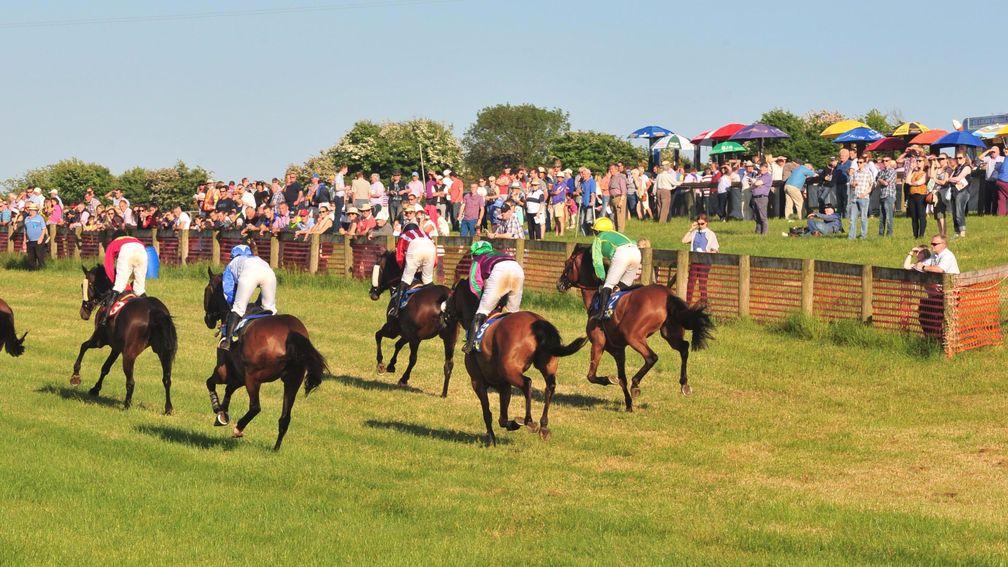
Point-to-pointing lies at the heart of Ireland’s jump racing tradition, tracing its lineage to the fabled origins of steeplechasing in the race from St John’s in Buttevant to St Mary’s in Doneraile in 1752.
In terms of many important criteria, Irish point-to-pointing today is enjoying a golden era. Big prices at the sales; a steady stream of high-profile recruits to top yards in Britain and Ireland; ambitious young trainers capable of producing superbly schooled young horses in peak condition at the first time of asking; several of the most accomplished amateur riders in Irish racing history – these are the hallmarks of a vibrant and thriving scene. Former Irish pointers won 77 Graded races in Britain and Ireland during the 2016-17 season.
And yet, there is a downside, analogous to the growing polarisation of the Irish jump racing scene which has resulted from an ever increasing gap between the top half-dozen trainers, supported by a cohort of powerful owners, and the remainder.
In the pointing world, the four-year-old maidens and the five-year-old maidens, the principal showcase of the sport, are now comprehensively dominated by a small group of handlers, mainly located in the south-east of the country in County Wexford.
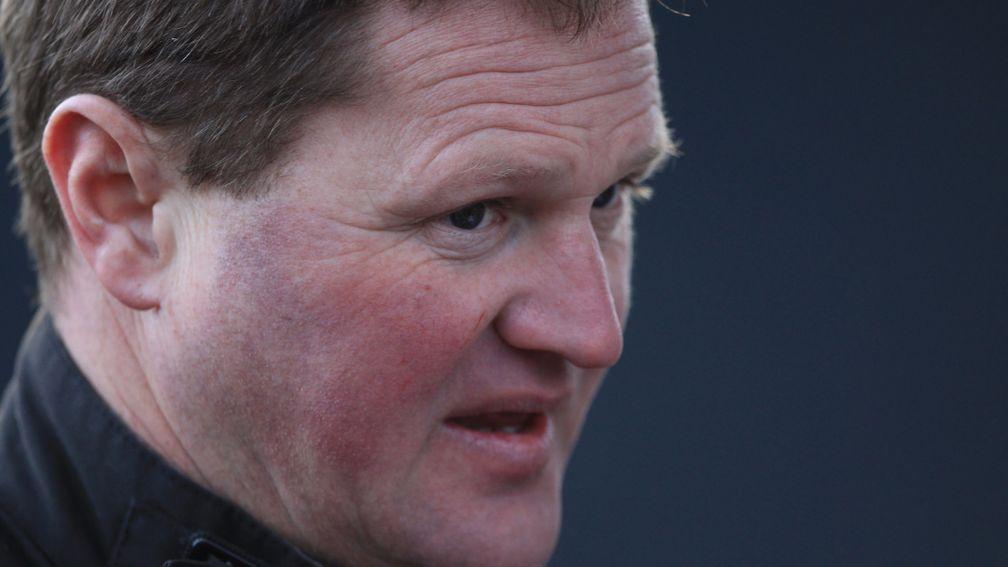
The very success typified by these influential figures now poses a serious challenge for a point-to-point community whose landscape has evolved rapidly over the past decade and a half.
The outbreak of foot and mouth disease in Britain in 2001 was a time of crisis for the horseracing industry in Ireland. One of its effects was to bring the point-to-point season to a premature close in late February.
Out of this adversity came an innovation that changed the complexion of the sport – the introduction of an autumn season, initially as a one-off consolation measure. This became permanent. Ever since, the season has run from October to the first week of June.
Huge implications
This had huge implications for the viability of running a dedicated point-to-point yard, and introduced a level of professionalism which now sees the sector becoming increasingly distanced from its historic roots.
The Wexford trainers, of whom Colin Bowe, Denis Murphy and the Doyle brothers Donnchadh and Sean, are the best known – and a handful of other leading producers – have ridden the wave of a buoyant market in recent seasons. They employ the traditional Irish model of buying store horses for resale, but are doing so with an unprecedented standard of professionalism and a weight of numbers. The business model is well-honed.
It involves winning a maiden point, selling quickly, either at public auction or privately, often to one or other of half a dozen or so leading jumps owners, and reinvesting with quality store horses in significant numbers.
Last year Gerry Kelleher, a trainer based at Macroom in County Cork, helped to initiate discussions leading to the formation of the Irish Point-to-Point Handlers Association.
Kelleher explained the background: “There were many issues which concerned us – a reduction in the number of horses running in points; owners and handlers getting out of the game; increased costs and lack of adequate funding in terms of prize-money and support for the local hunt committees who run the fixtures.”
From boom to bust
The worries expressed by Kelleher are borne out by statistics since the turn of the century when point-to-pointing enjoyed its share of the bonanza linked to Ireland’s economic boom. In the 2008-09 season, the number of hunter certificates issued reached an all-time high of 4,714.
Then, as recession took hold, the number of horses in the system started to drop, slowly at first, dipping back below the 4,000 mark in the 2012-13 season (3,930). This was followed by four seasons of continued contraction, culminating in a total of 2,755 last season, the lowest total since 2,445 certificates were recorded in 2001, the year of foot and mouth. These reductions are reflected in a corresponding drop in the number of runners per season, from a historic high of 11,622 in the 2008-09 season to 5,476 in 2016-17.
The one consolation from last year’s total was that it was almost on a par with the previous season’s figure of 5,482. This may imply an arresting of the slide which has continued until now, against the general national trend of economic recovery.
The shortage of runners is at its most apparent in races for older horses, reflecting the loss from the sport of small-time handlers. In Kelleher’s words, “the farmer with one or two horses, the breeder who keeps one to train at home”.
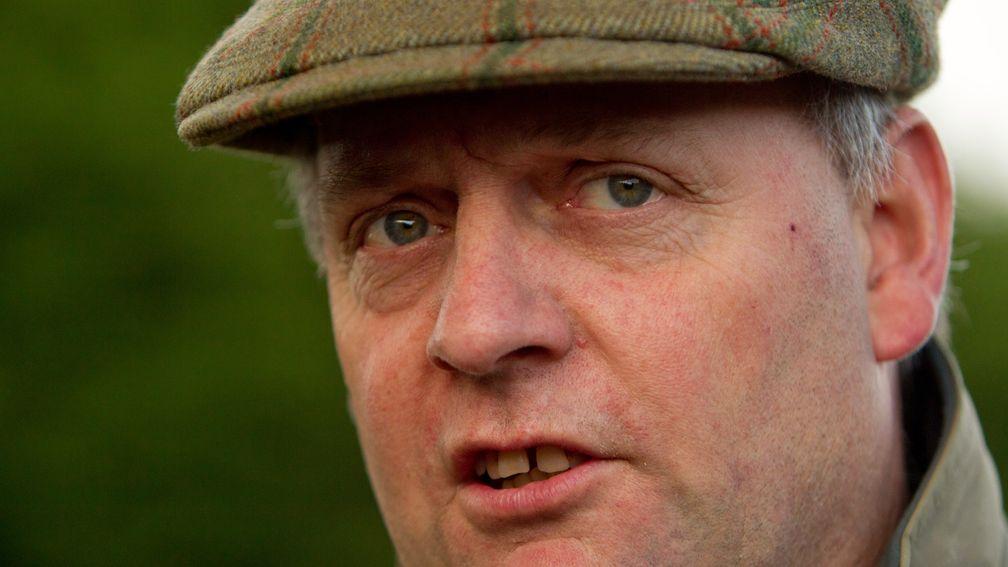
In the 2008-09 season 367 individual handlers recorded at least one point-to-point win. The figure has dropped in every subsequent year, with the pace of decline particularly marked over the past five seasons to reach a figure of 232 in 2016-17.
The lobbying undertaken by Kelleher and colleagues, including trainer Eugene O’Sullivan, bore early dividends. Last December, prize-money for maidens other than those in the four-year-old and five-year-old categories was raised from €800 to €1,200, and the grant to hunt committees was boosted from €4,500 to €6,500 per meeting. With the backing of the Turf Club’s INHS committee the total funding for point-to-point racing jumped by €728,000 to €2.2m, including €745,000 in integrity costs.
Real problems
However, O’Sullivan is pessimistic about the outlook. “We’re potentially in a very serious situation,” he said. “Away from the four- and five-year-old maidens there are real problems. We need to fund the other races, the maidens for older horses, the mares’ races, the winners’ races and the opens to try to win back the owners and the small-scale handlers who have disappeared. If things go on at this rate we soon won’t have the number of horses to run a full six-race card.”
He added: “I used to have owners who would start horses in points at six, or even seven, and hope to go on to the track if they’re good enough. That side of the business is completely gone now, and it’s all about the four-year-old category, dominated by very professional operators who are mopping up the maidens and looking to sell quickly.
“When you also factor in the likes of Pat Doyle, who trains pointers for Gigginstown, there is precious little room for anyone else.
“Last year only one four-year-old winner was trained in my own area of Cork and Waterford, which was the traditional home of pointing. To me that’s a shocking statistic.”
O’Sullivan’s remarks ring true. When he was champion handler in the 2007-08 season there were three other Cork-based trainers in the top eight on the list. He continues to be influential, along with Robert Tyner, champion three times between 2009 and 2014, and Declan Queally, who has been making a big name for himself in County Waterford, but the region is in danger of becoming a poor relation.
In contrast to Britain, where point-to-pointing is principally about sport, Irish point-to-pointing has always been involved with trade and livelihoods.
O’Sullivan stresses the need to find a balance so that the smaller operator can entertain a realistic chance of returning a profit.
Early concerns
With the 2017-18 season in its relative infancy, it would be unwise to jump to any conclusions, but the relative paucity of runners at the fixtures at Rathcannon in County Limerick and Tinahely in County Wicklow last month, raised early concerns.
The six races at Rathcannon attracted only 31 participants including Youcannotbeserious, an Enda Bolger-trained gelding who was afforded a walkover. Another contest cut up to a match. The Tinahely meeting managed only 41 runners.
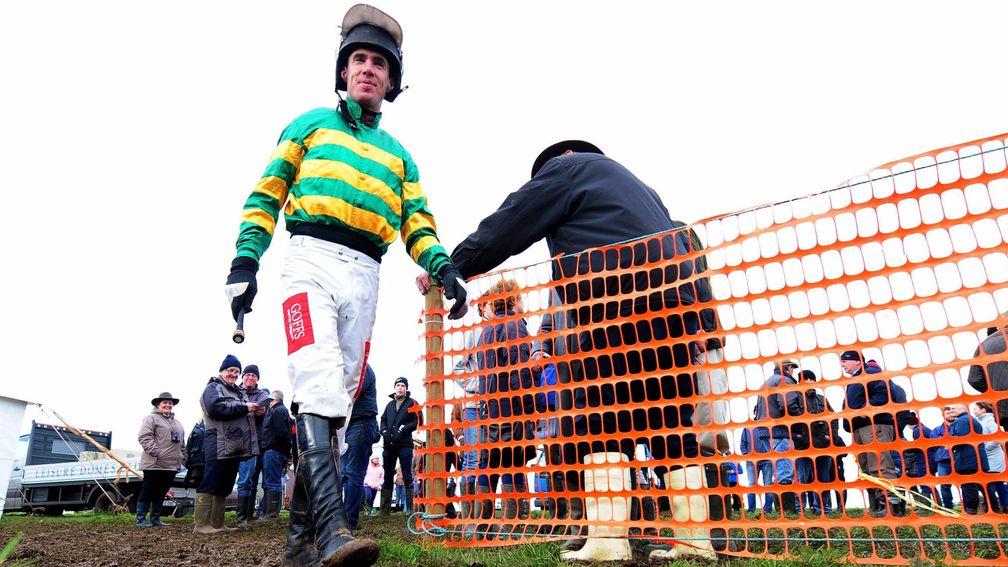
Top rider and Racing Post columnist Derek O’Connor does not think this necessarily means things have got worse this season.
He said: “I think that weekend was a combination of factors, including a spell of bad weather. We had Hurricane Ophelia earlier that week, and Storm Brian had only just passed over, so people may not have been keen to travel. As well as that, it takes time for the season to build momentum.
“I’m actually quite positive from what I saw in the run-up to the season. I did a lot of schooling in different parts of the country and got the impression numbers are going to be healthier this season. Certain yards which have been very quiet in recent years seem to be heading in the right direction again.”
O’Connor alludes to the 74 runners who turned out for an eight-race card at Lisronagh the following Saturday as a more realistic snapshot. Nevertheless, it was disconcerting that the Meath and Tara fixture at Dowth Hall on October 25, billed as a country fair and attracting more than 6,000 spectators and widely hailed as a wonderful success in every other respect, featured only 46 runners.
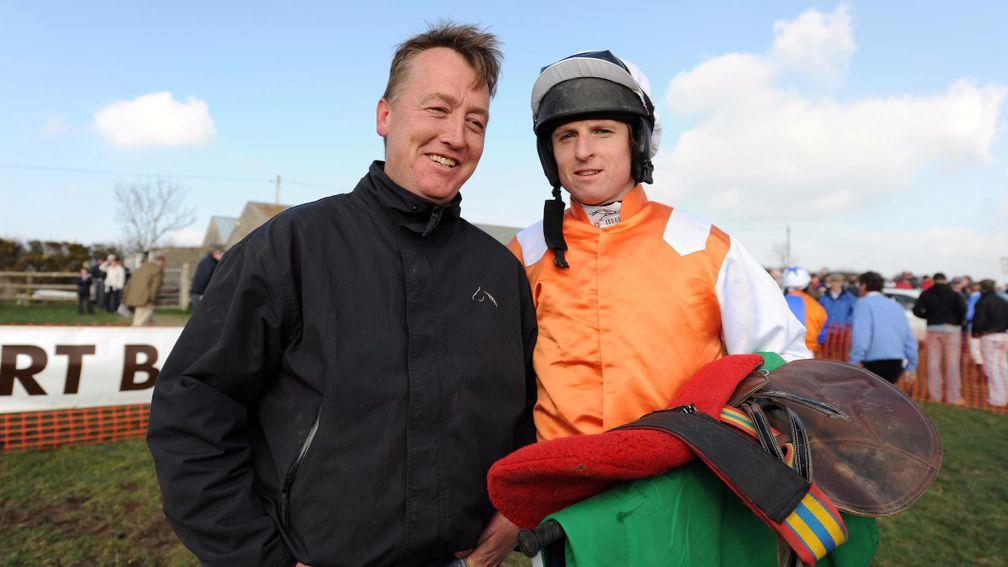
Recession a factor
Denis Murphy, who finished third behind Bowe and Donnchadh Doyle on the trainers’ list last season and sold the subsequent dual Grade 1 winner Finian’s Oscar for £250,000 last November, points to a drop in the foal crop in the aftermath of the recession as a factor, allied to the loss of owners and smaller-scale operators.
He said: “I’m hopeful the numbers will start coming back in the next season or so, because foal numbers have been picking up. But things have definitely changed.
“In my own day as a rider I used to ride for a lot of local people in Wexford who had just a couple of horses. They have gone now, and it’s a loss. There are fewer older horses around as a result. I have only a few myself and in an ideal world I’d love to have more. I really enjoyed training Theroadtocroker, a proper old-style point-to-pointer and a good horse over the banks.”
Murphy cited Finian’s Oscar to illustrate the strength of the four-year-old maidens.
He added: “He won at Portrush in October last year and was a Grade 1 winner in the Tolworth in the first week of January. They aren’t all going to be like him but most of these horses winning maidens at this time of the year would bolt up in a maiden hurdle. The competition is unbelievable.”
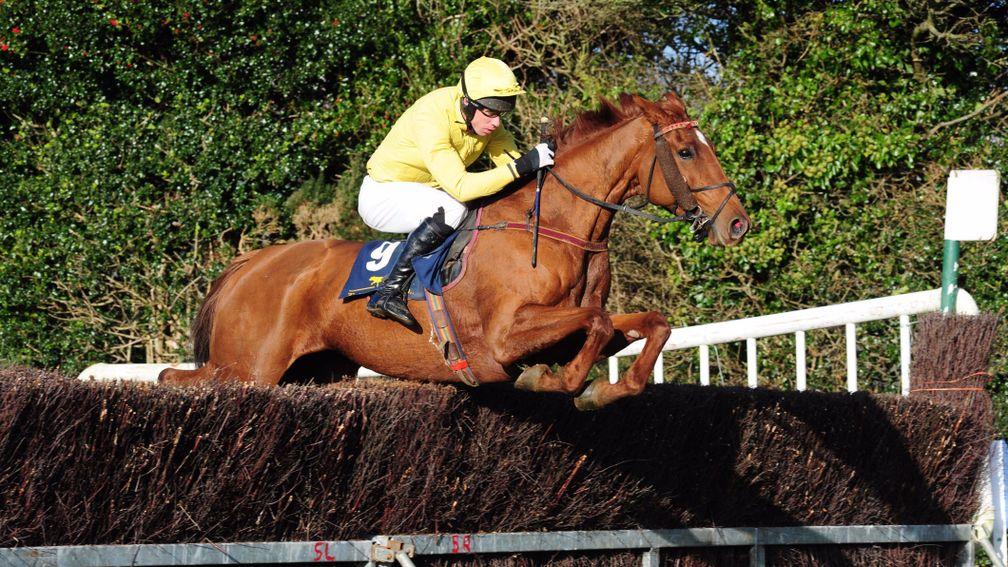
Hunting in decline
Paurick O’Connor, a leading handler in the west of Ireland, has forthright views and is worried about the long-term future for traditional point-to-pointing. In analysing the decline he references a falling-off in the tradition of hunting in rural Ireland.
He said: “Hunting has been in decline, fewer young people involved, fewer horses around the place, fewer people involved with the hunt committees who are at the heart of organising the point-to-points.
“You need a lot of volunteers to run a point-to-point and it’s an expensive business, which brings us to the other big problem.
“HRI and the Turf Club have consistently failed to offer adequate financial support for point-to-pointing. They need to wake up to the reality of what is happening, because if things continue to go this way point-to-pointing will soon be a thing of the past.”
Omens not all bad
This linking between the preservation of tradition and the need to provide funding for continuing prosperity lies at the heart of the challenge in getting the balance right, ensuring there is a place for the majority at the grassroots as well as the minority now setting ever-higher standards.
The omens are not all bad. There has always been an impressive sense of solidarity among the Irish point-to-point community. For example, there is no hint of any begrudgery towards the Wexford trainers or other leading handlers of the younger pointers. “Fair play to them” is the common refrain.
There is hope in the fact that dedicated individuals with great experience of the sport, such as O’Sullivan and Kelleher, are actively engaged in trying to find solutions. They have come up with ideas in respect of incentive races for particular categories, and continue to lobby hard for increased funding.
Irish point-to-pointing has an impressive legacy. It is too precious to lose.
Threat of Brexit hangs over Northern Irish sector
As is the case under Turf Club rules, point-to-pointing is an all-Ireland activity, and the sector has enjoyed a sustained period of vibrancy in Northern Ireland.
Wilson Dennison, whose point-to-pointers are prepared by Colin McKeever, is a leading producer of young jumping talent and the region has supplied several of the best Irish hunter chasers of recent years.
Dennison’s influence was superbly highlighted when his graduates Yorkhill, Blaklion and Ballyandy won on the second day of the 2016 Cheltenham Festival, the last two scoring at the main expense of other former residents of his Loughanmore yard, Shaneshill and Battleford.
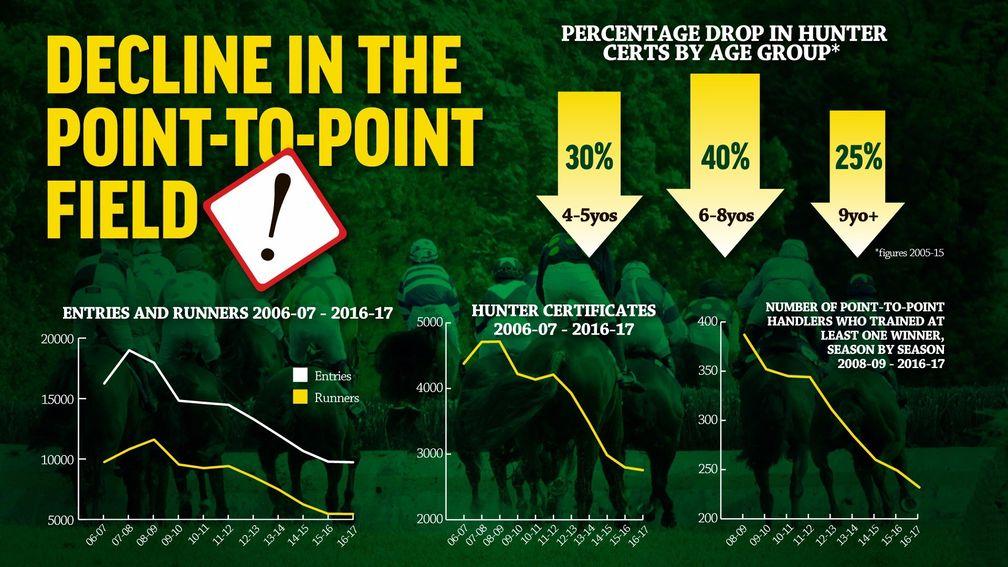
Other stalwarts of the scene include Ian Ferguson, who won the 2011 Cheltenham Foxhunter with Zemsky, and Liam Lennon, who won the same race with Tammys Hill in 2014 beating the McBratney-trained Carsonstown Boy. Last season Graham McKeever won the Champion Hunter Chase at Punchestown with Balnaslow.
However, point-to-pointing in Northern Ireland faces a potential threat from Brexit. The reintroduction of border controls would be a serious hindrance for southern handlers bringing horses north to popular venues such as Loughanmore, Maralin and Tyrella and would create corresponding difficulties for northern handlers travelling south in search of opportunities.
McBratney thinks the level of inaction from local politicians is a concern. He said: “I’m afraid our politicians are too busy bickering among themselves, and there doesn’t seem to be any clear idea of how things will work out.
“At least HRI and the Department of Agriculture in Dublin have listened to our concerns and are supportive, but we’re really none the wiser for the moment. It’s a worry, but you just hope common sense prevails in the end.”
As McBratney sees it, point-to-pointing in Northern Ireland is basically in good shape, although he concedes that things have become more difficult for the smaller operator.
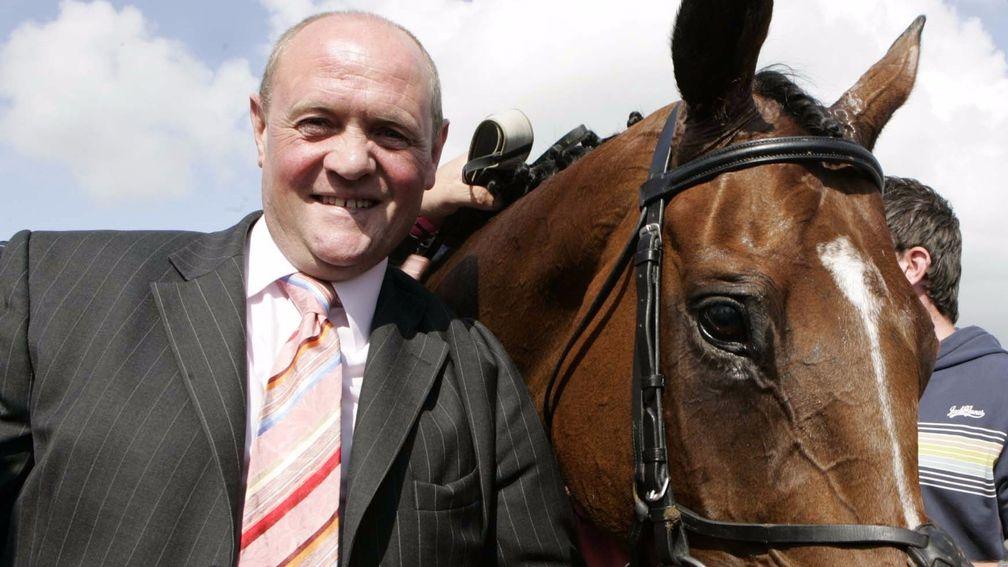
He said: “Insurance costs are an issue for people with just a couple of horses and administration costs have increased. There’s been a drop in the number of runners in points. Mind you, every time I take horses schooling I certainly don’t see any shortage of horses.”
“Fiercely competitive,” is McBratney’s description of the four-year-old and five-year-old maidens on the northern circuit. “The Wexford boys have really raised the bar. We have a very strong four-year-old scene. Every maiden in the north in that age-group is sponsored by Wilson Dennison who has put a huge amount into the sport and deserves every penny he gets out of it.
“He and Ronnie Bartlett are outstanding supporters of point-to-pointing. We have very good tracks in the north and we get big crowds who love their racing.”
Members can read the latest exclusive interviews, news analysis and comment available from 6pm daily on racingpost.com
Published on 29 March 2018inFeatures
Last updated 13:56, 29 March 2018
- Government says it is working 'at pace' to have white paper measures in force by the summer
- 'The only thing you can do is lie fallow and regroup' - Meades to return with scaled-back operation following blank period
- The Gambling Commission has launched its new corporate strategy - but what are the key points?
- 'It was tragic it happened to Paddy but it was a good thing for the jockeys who followed - good came out of bad'
- Acquisitions, exits and retail resilience - what we learned from Flutter and 888's results
- Government says it is working 'at pace' to have white paper measures in force by the summer
- 'The only thing you can do is lie fallow and regroup' - Meades to return with scaled-back operation following blank period
- The Gambling Commission has launched its new corporate strategy - but what are the key points?
- 'It was tragic it happened to Paddy but it was a good thing for the jockeys who followed - good came out of bad'
- Acquisitions, exits and retail resilience - what we learned from Flutter and 888's results